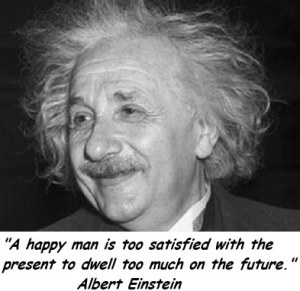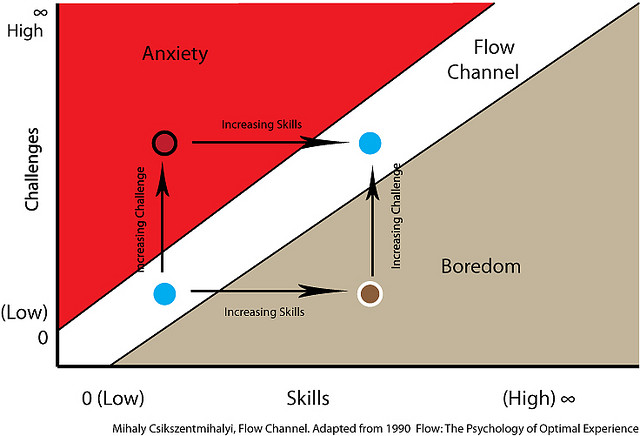Wing Chun and Flow
 IMAGINE THAT YOU ARE SKIING DOWN A SLOPE and your full attention is focused on the movements of your body and your full attention is focused on the movements of your body, the position of the skis, the air whistling past your face, and the snow-shrouded trees running by. There is no room in your awareness for conflicts or contradictions; you know that a distracting thought or emotion might get you buried face down in the snow. The run is so perfect that you want it to last forever (Csikszentmihalyi 1997)
IMAGINE THAT YOU ARE SKIING DOWN A SLOPE and your full attention is focused on the movements of your body and your full attention is focused on the movements of your body, the position of the skis, the air whistling past your face, and the snow-shrouded trees running by. There is no room in your awareness for conflicts or contradictions; you know that a distracting thought or emotion might get you buried face down in the snow. The run is so perfect that you want it to last forever (Csikszentmihalyi 1997)
Let’s reframe that in Wing Chun Terms- imagine that you are playing Chi Sau and your full attention is focused on the movements of your body, the positions of your arms, the positions of your partner, and the forces shared between you. You are aware of the room, others training and other obstacles to your movements. There is no room in your awareness for conflicts or contradictions; you know that a distracting thought or emotion might get you struck by your partner. The rolling is so perfect that you want it to last forever. You have experienced “flow”. As a phenomena known to us it is not new – mindfulness, Zen, the zone, being in the moment, empty mind, optimal experience are but a few of its names. It feels good. It makes us happy –on the inside (this is very important).
What is flow?
Since the days of Aristotle learned men and women have tried to explain people’s pursuit of happiness. We all try to find explanations of everything known and unknown and yet to be known. As our tools and language progress we are able to define and quantify our existence and all within it much better than the days of Aristotle and Plato. The concept of “flow” was first coined by Mihaly Csikszentmihalyi (1975) (chick-sent-mee-hi- yee) who found that people experiencing flow frequently used the metaphor of being carried along effortlessly on a current. Flow is a subjective state that is experienced when individuals are completely absorbed by an enjoyable activity. Csíkszentmihályi described flow as “being completely involved in an activity for its own sake. The ego falls away. Time flies. Every action, movement, and thought follows inevitably from the previous one, like playing jazz. Your whole being is involved, and you’re using your skills to the utmost.”[2] So how do we recognize this flow experience? According to Csíkszentmihályi, there are eight commonly reported traits that naturally accompany the experience of flow. While many of these components may be present, it is not necessary to experience all of them for flow to occur:
- Clarity: The goal of the activity is clear. Not conflicting. Not confusing. And not just the overall goal. At every stage you know what to do next.

- Focus: Your attention is concentrated and you are focussed on what you’re doing. Generally, our brains are constantly switching between doing something and monitoring the result. But when in flow, these two merge into one.
- Confidence: You lose self consciousness. You stop worrying about what others think because you don’t have this luxury. You’re doing something more important. As a result, losing self consciousness while in flow can mean you appear more confident than you normally might. There are increased feelings of serenity
- Timing: Your sense of time gets transformed in some way. You might spend what felt like a few minutes doing something only to discover you were doing it for hours. The time just flew by. Or the opposite might happen and everything slows down and you can see the ball actually bounce off the racket strings like Neo would if he played tennis.
- Feedback: Feedback is immediate. At every step, you are given feedback allowing you to make your next move. Otherwise you’ll get bored, distracted and won’t be alert.
- Challenge: The challenge of the activity matches your skill level: not so easy that you get bored, and not so difficult that you get overwhelmed.Control: You’re in control. But not totally… if it was too easy you’d get bored or complacent. You’re on an edge but still in control.
- No Distractions: You are not distracted by everyday problems, frustration, by the things or people around you. You’re so engaged in what you’re doing that you can’t afford to think about something else, nor is it necessary. Some may say that this is an escaping of reality but I would rather call it a fully focused attention to the reality of the moment.
The Benefits of flow
In addition to making an activity more enjoyable, flow also has a number of other benefits. Flow is an essentially positive experience and is known to produce intense feelings of enjoyment. In the book, Handbook of Competence and Motivation (2005), Csíkszentmihályi and others found that:
- Flow has a strong, documented relationship with performance enhancement
- That achieving a flow state is positively linked with optimal performance in many fields including artistic and scientific creativity, teaching, learning, and sports.
- Flow also has a strong relationship with the further development of skills and personal growth.
- When one is in a flow state, he or she is working to master the activity at hand.
- To maintain that flow state, one must seek increasingly greater challenges. Attempting these new, difficult challenges stretches one’s skills.
- One emerges from such a flow experience with a bit of personal growth and great “feelings of competence and efficacy”.
- And that flow is positively correlated with a higher subsequent motivation to perform and to perform well.
How is flow achieved in any activity?
Several factors have been identified that will facilitate flow. Csíkszentmihályi and his colleagues (2005) specifically outline three conditions that are important for encouraging optimal experience or flow. These include
- having clear goals,
- the provision of specific feedback concerning task performance, and
- having the skills necessary to perform the task.
Research into the area of Challenge/Skill Balance, Flow, and Performance Anxiety at Kansas State University in 2012 involving music students saw these three conditions as being dynamically related. Their research suggested that optimal levels of flow are achieved through two interrelated processes.
- First, individuals should, when possible, choose moderately challenging tasks that are commensurate with their ability.
- Second, a practice regime should be established that has clear goals and specific feedback, enabling the individual to develop the skills necessary to perform the task.
Other research drawing upon emotional contagion theory, found that flow spilled over from music teachers to their students. Consequently, another way of increasing flow and decreasing performance anxiety is for teachers to model the state both in their own performances and in their instruction.
What else do I need to experience flow?
Reading through all the articles and books one the factor comes through quite strongly as a requirement to achieve flow and that is the personal characteristic of being able to enjoy the activity for its own sake. E.g. swimming because you  just like swimming, painting because you like to just paint, doing your Wing Chun forms because you just like doing the forms. We all have various combinations of different personality traits that make up our whole personality. A traitnamed as “Autotelic” describes those people who generally does things for their (the activities) own sake, in the “here and now”, rather than for some later goal. The autotelic personality is said to have several very specific personality traits which are better able to achieve the “flow experience” than the average person. These personality traits include curiosity, persistence, low self-centeredness, and a desire of performing activities for intrinsic reasons only. As with all personality traits no one has just a single trait therefore there will be varying degrees of autotelic ability within all of us. No one is fully autotelic, since we all have to do things even if we don’t enjoy them, either out of a sense of duty or necessity. But there is a gradation, ranging from individuals who almost never feel that what they do is worth doing for its own sake, to others who feel that most anything they do is fun and valuable in its own right. It is to these latter individuals the term autotelic personality applies. There was another study done in 2010 by Connolly and Tenenbaum that looked at the level of exertion at which flow experiences occurred in a bunch of male and female rowers. Interestingly there were differences in flow experiences between genders at different levels of exertion. Also experience wasn’t critical to achieving flow as long as the intensity/challenge was relevant to the skill /experience. “Women showed higher scores in challenge–skill balance, merging of action-awareness, loss of self-consciousness, sense of control, and autotelic experience at the 75% and maximal workloads. Men were slightly higher in total concentration, sense of control, merging of action-awareness, clear goals, and unambiguous feedback at the 30% workload level.”(2010). However everyone showed a greater match between skill balance and task challenge as their intensity peaked towards 75 % of their total capacity.
just like swimming, painting because you like to just paint, doing your Wing Chun forms because you just like doing the forms. We all have various combinations of different personality traits that make up our whole personality. A traitnamed as “Autotelic” describes those people who generally does things for their (the activities) own sake, in the “here and now”, rather than for some later goal. The autotelic personality is said to have several very specific personality traits which are better able to achieve the “flow experience” than the average person. These personality traits include curiosity, persistence, low self-centeredness, and a desire of performing activities for intrinsic reasons only. As with all personality traits no one has just a single trait therefore there will be varying degrees of autotelic ability within all of us. No one is fully autotelic, since we all have to do things even if we don’t enjoy them, either out of a sense of duty or necessity. But there is a gradation, ranging from individuals who almost never feel that what they do is worth doing for its own sake, to others who feel that most anything they do is fun and valuable in its own right. It is to these latter individuals the term autotelic personality applies. There was another study done in 2010 by Connolly and Tenenbaum that looked at the level of exertion at which flow experiences occurred in a bunch of male and female rowers. Interestingly there were differences in flow experiences between genders at different levels of exertion. Also experience wasn’t critical to achieving flow as long as the intensity/challenge was relevant to the skill /experience. “Women showed higher scores in challenge–skill balance, merging of action-awareness, loss of self-consciousness, sense of control, and autotelic experience at the 75% and maximal workloads. Men were slightly higher in total concentration, sense of control, merging of action-awareness, clear goals, and unambiguous feedback at the 30% workload level.”(2010). However everyone showed a greater match between skill balance and task challenge as their intensity peaked towards 75 % of their total capacity.
So what is the relevance of Flow theory to Wing Chun?
Please take a good look at the diagram above. Flow appears on a continuum through the middle channel as challenge and skill are matched and increase proportionately. For me this has great significance as I look at how I teach my students and how I approach my own training. From a personal training perspective: If I want to enjoy the experience of flow there are many things I need to take into account from all this to apply to my training. The first is to always be aware of why I am doing something and to remember to try to not operate from ego. To look at my motivation for doing something and determine whether it is for the sake of the enjoyment of the activity itself or to satisfy some other need. Am I doing this to show off, am I angry and just want to belt something to let out frustration? Am I feeling tired, apathetic or bored? Am I bringing any “baggage” from my day into training with me that I should be really checking at the door and pick up again as I leave (or just leave it because it probably wasn’t worth getting stressed over anyway). Have I got a clear goal of what I want to do? Have I set the task to be as challenging as I can to not leave me bored and to not produce anxiety/stress that I can’t focus on it purposefully. If I need a partner to train with is there someone who I can work with that will support what I need to do and that I will not create an unsatisfactory environment for them to train as well. Training with people of differing skill levels will mean I have to create the correct set of goals. For me not every training session has to result in achieving a flow experience. I can belt the pads if I want. I can just stand there in my stance for as long as possible as well. Often though if you’re doing what you like time will fly anyway. From a teaching perspective:As students and teachers of Wing Chun I feel it is important that we take note of the lessons from flow research in the way we design our teaching sessions, in the manner we teach, and the training environments we foster at our schools.
- Giving clear goals on what we are expecting to do with particular exercises, drills etc
- Removing opportunity for ego’s to be driving actions,
- Not overwhelming people with too many things to think about at once,
- Gradually adding complexity as skills increase
- Avoiding the extremes of boredom and anxiety- recognizing them if they occur and modifying what is happening to increase enjoyment
- Pushing gently to increase the challenge factor
- Creating opportunities for people to regularly experience flow – increasing their enjoyment in their training and developing their confidence and skills.
- Giving free space/time for people (of similar skill levels ) to express /play/experiment with their skills
- It is not necessary for people to work at 100% capacity to increase their skills and performance and aiming to get to 75% may be more beneficial at times.
- Personally taking the student into a flow state by training with them at just the right level to have them “zone out” or get “into a zone” e.g. rolling in chi sau for their development not for my benefit (remember you can still get a flow experience at even 35% capacity)
By teaching the experience of flow it can carry across into other parts of our lives & work recreation etc and enhance our enjoyment of them as well– what better gift to give.
